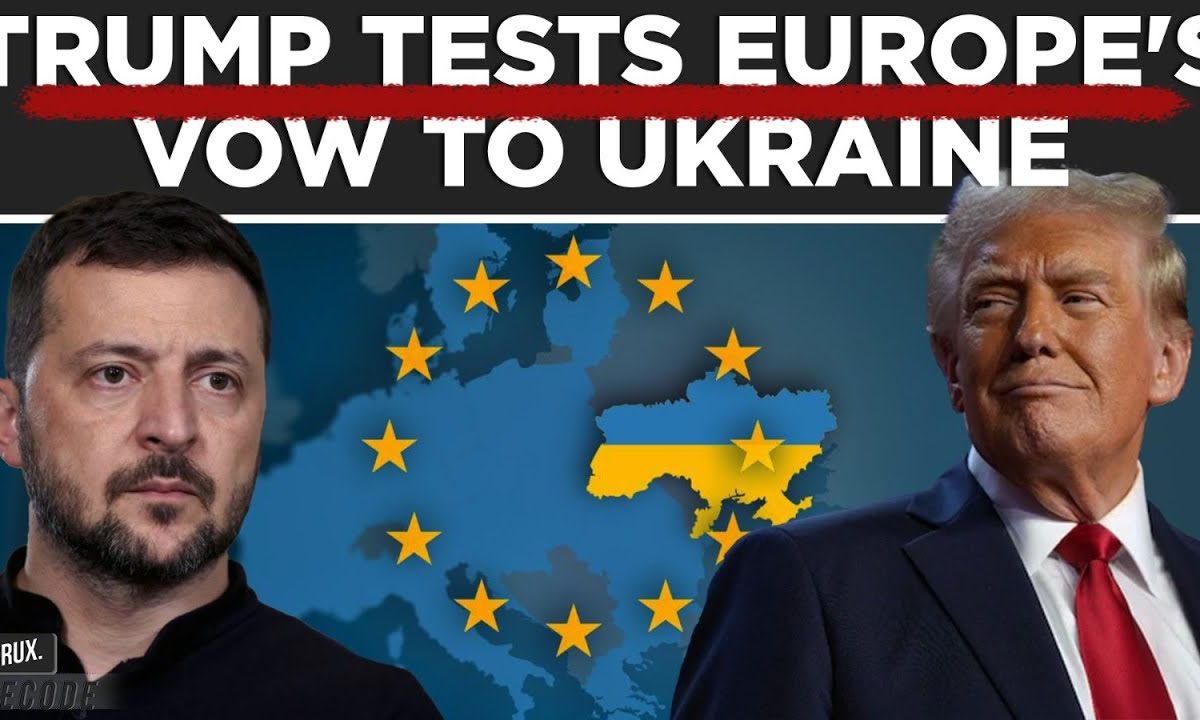- January 25, 2024
Steadfast Defender 2024: Nato’s largest military exercise since Cold War kicks off amid tensions with Russia – Times of India

In a significant display of military readiness, the US Navy dock landing ship Gunston Hall embarked on a pivotal journey from Norfolk on Wednesday. This departure signifies the commencement of the Steadfast Defender 2024, Nato‘s most extensive military exercise since the Cold War era. The drills, set to continue through May, are expected to showcase the alliance’s preparedness and strategic capabilities.
Steadfast Defender 2024: A show of force
The scale of Steadfast Defender 2024 is unprecedented in recent history. Approximately 90,000 troops from the United States and other Nato member nations are slated to participate. The exercise will feature an impressive array of military hardware, including over 50 naval vessels ranging from aircraft carriers to destroyers, and a formidable air contingent of more than 80 units comprising fighter jets, helicopters, and drones. The ground forces are equally robust, with at least 1,100 combat vehicles, including 133 tanks and 533 infantry fighting vehicles, ready to demonstrate Nato’s ground capabilities.
The drills are not merely a display of military might but are strategically designed to rehearse Nato’s execution of its regional plans. These plans, the first of their kind in decades, outline the alliance’s response mechanisms to potential threats, notably addressing concerns regarding Russian aggression.
While Nato’s official statements did not explicitly name Russia, the context is unmistakably clear. The alliance’s top strategic documents pinpoint Russia as the foremost and direct threat to the security of Nato members. This exercise is particularly poignant, unfolding against the backdrop of the ongoing conflict in Ukraine, marking the most severe war on European soil in over seven decades.
Statements from the frontline
Matthias Eichenlaub, a Nato spokesperson, took to Twitter to underscore the magnitude of the exercise, stating, “#Nato today launched its biggest military exercise since 1988 with 90,000 personnel taking part in drills across the North Atlantic and Europe.” He further highlighted the symbolic significance of the Gunston Hall’s departure, marking the official onset of #SteadfastDefender24.
General Christopher Cavoli, Nato’s Supreme Allied Commander Europe, emphasized the strategic importance of the exercise. He said that Steadfast Defender 2024 is not just a military drill but a “clear demonstration of our unity, strength, and determination to protect each other, our values, and the rules-based international order.” The exercise, spanning from North America to Nato’s eastern borders, is a testament to the alliance’s resolve and readiness to respond to threats in an increasingly volatile global landscape.
Russia’s stance
The Russian perspective on these developments is one of apprehension and criticism. Alexander Grushko, Russia’s deputy foreign minister, conveyed to the state RIA news agency that Nato’s extensive maneuvers signify an “irrevocable return” to Cold War-era military posturing.
“These exercises are another element of the hybrid war unleashed by the West against Russia,” Grushko told RIA. “An exercise of this scale … marks the final and irrevocable return of Nato to the Cold War schemes, when the military planning process, resources and infrastructure are being prepared for confrontation with Russia.”
(With inputs from agencies)
Steadfast Defender 2024: A show of force
The scale of Steadfast Defender 2024 is unprecedented in recent history. Approximately 90,000 troops from the United States and other Nato member nations are slated to participate. The exercise will feature an impressive array of military hardware, including over 50 naval vessels ranging from aircraft carriers to destroyers, and a formidable air contingent of more than 80 units comprising fighter jets, helicopters, and drones. The ground forces are equally robust, with at least 1,100 combat vehicles, including 133 tanks and 533 infantry fighting vehicles, ready to demonstrate Nato’s ground capabilities.
The drills are not merely a display of military might but are strategically designed to rehearse Nato’s execution of its regional plans. These plans, the first of their kind in decades, outline the alliance’s response mechanisms to potential threats, notably addressing concerns regarding Russian aggression.
While Nato’s official statements did not explicitly name Russia, the context is unmistakably clear. The alliance’s top strategic documents pinpoint Russia as the foremost and direct threat to the security of Nato members. This exercise is particularly poignant, unfolding against the backdrop of the ongoing conflict in Ukraine, marking the most severe war on European soil in over seven decades.
Statements from the frontline
Matthias Eichenlaub, a Nato spokesperson, took to Twitter to underscore the magnitude of the exercise, stating, “#Nato today launched its biggest military exercise since 1988 with 90,000 personnel taking part in drills across the North Atlantic and Europe.” He further highlighted the symbolic significance of the Gunston Hall’s departure, marking the official onset of #SteadfastDefender24.
General Christopher Cavoli, Nato’s Supreme Allied Commander Europe, emphasized the strategic importance of the exercise. He said that Steadfast Defender 2024 is not just a military drill but a “clear demonstration of our unity, strength, and determination to protect each other, our values, and the rules-based international order.” The exercise, spanning from North America to Nato’s eastern borders, is a testament to the alliance’s resolve and readiness to respond to threats in an increasingly volatile global landscape.
Russia’s stance
The Russian perspective on these developments is one of apprehension and criticism. Alexander Grushko, Russia’s deputy foreign minister, conveyed to the state RIA news agency that Nato’s extensive maneuvers signify an “irrevocable return” to Cold War-era military posturing.
“These exercises are another element of the hybrid war unleashed by the West against Russia,” Grushko told RIA. “An exercise of this scale … marks the final and irrevocable return of Nato to the Cold War schemes, when the military planning process, resources and infrastructure are being prepared for confrontation with Russia.”
(With inputs from agencies)







